Aerothermal Dynamic Characteristics of Array Micro Ribs in Channel Flow
Abstract
:1. Introduction
2. Experimental Setup and Procedure
2.1. Experimental Apparatus
2.2. Experiment Design
2.3. Heat Transfer Measurment Techniques
2.4. Uncertainty Analysis
3. Numerical Methodology and Data Reduction
3.1. Numerical Setup
3.2. Data Reduction
3.3. Numerical Validation
4. Results and Discussion
4.1. The Resistance and Heat Transfer Characteristics of Arrayed Micro Ribs
4.2. The Near-Wall Reinforcement Mechanism of Micro Ribs
4.3. Characteristic Dimensionless Numbers for Heat Transfer Enhancement of Micro Ribs
4.4. Effect of Micro Ribs on Overall Evaluation
5. Conclusions
- (1)
- Regarding the drag characteristics of micro ribs, it was found that the drag continuously increases with the increase in rib height and is not sensitive to changes in Reynolds number, with only slight differences observed at low Reynolds numbers (Re = 5000–10,000). The formation of recirculation vortices between the ribs due to the increase in rib height is the main factor contributing to the increase in drag. These findings apply specifically to micro ribs with smaller heights.
- (2)
- The heat transfer characteristics of micro ribs are greatly influenced by rib height and Reynolds number. At low Reynolds numbers, the heat transfer performance of micro ribs increases continuously with the increase in rib height. As the Reynolds number continues to increase, the heat transfer characteristics of micro ribs initially increase and then decrease with the increase in rib height. Analysis of the turbulent enhancement of the downstream flow caused by micro ribs under different operating conditions reveals that micro ribs are the main cause of heat transfer enhancement between ribs through the turbulent enhancement in the near-wall region of the boundary layer (y+ = 20–55). With further increase in rib height, the region of turbulent enhancement is elevated, which leads to no further increase in heat transfer.
- (3)
- An empirical correlation of heat transfer and resistance based on the experimental range in this study is proposed. The form of the correlation can further verify the aforementioned heat transfer resistance characteristics. Additionally, a dimensionless parameter related to the incoming boundary layer scale is proposed in this paper. This parameter can effectively reflect the heat transfer characteristics of micro ribs. It is revealed that micro ribs exhibit good overall heat transfer performance when this dimensionless parameter is between 20 and 55.
- (4)
- Overall, the micro ribs investigated in this study demonstrate excellent heat transfer performance under specific operating conditions. This optimized performance indicates the potential for achieving higher heat transfer efficiency and energy utilization in various practical applications through the design and application of micro ribs.
Author Contributions
Funding
Data Availability Statement
Conflicts of Interest
Nomenclature
| Bi | Biot number | [-] |
| D | Hydraulic diameter | [m] |
| f | Friction factor | [-] |
| H | Channel height | [m] |
| e | Rib height | |
| e+ | Rib dimensionless height | [-] |
| I | Turbulent intensity | [-] |
| K | Turbulent kinetic energy | [m2/s2] |
| Nu | Nusselt number | [-] |
| p | Rib pitch | [m] |
| Pr | Prandtl number | |
| q | Heat flux density | [W/m2] |
| R | Resistance | [Ω] |
| Re | Reynolds number | [-] |
| S | Surface area | [m2] |
| T | Temperature | [K] |
| Tf | Flow temperature | [K] |
| Tw | Wall temperature | [K] |
| U | Voltage | [V] |
| um | Bulk velocity | [m/s] |
| u, v, w | Velocity component in streamwise, wall-normal and spanwise direction | [m/s] |
| V | Velocity magnitude | [m/s] |
| X, Y, Z | Streamwise, wall normal and spanwise direction | [mm] |
| α | Thermal diffusivity | [-] |
| ΔP | Pressure loss | [Pa] |
| Λ | Thermal conductivity | [W/(m·k)] |
| ν | Kinematic viscosity | [m2/s] |
| ρ | Density | [kg/m3] |
References
- Webb, R.L.; Eckert, E.R.G.; Goldstein, R.J. Heat Transfer and Friction in Tubes with Repeated-Rib Roughness. Int. J. Heat Mass Transf. 1971, 14, 601–617. [Google Scholar] [CrossRef]
- Han, J.C. Heat Transfer and Friction in Channels with Two Opposite Rib-Roughened Walls. Trans. ASME J. Heat Transf. 1984, 106, 744–781. [Google Scholar] [CrossRef]
- Han, J. Heat-Transfer and Friction Characteristics in Rectangular Channels with Rib Turbulators. J. Heat Transf.-Trans. ASME 1988, 110, 321–328. [Google Scholar] [CrossRef]
- Tanda, G. Heat Transfer in Rectangular Channels with Transverse and V-Shaped Broken Ribs. Int. J. Heat Mass Transf. 2004, 47, 229–243. [Google Scholar] [CrossRef]
- Liou, T.; Hwang, J. Developing Heat-Transfer and Friction in a Ribbed Rectangular Duct with Flow Separation at Inlet. J. Heat Transf.-Trans. ASME 1992, 114, 565–573. [Google Scholar] [CrossRef]
- Taslim, M.E.; Li, T.; Kercher, D.M. Experimental Heat Transfer and Friction in Channels Roughened with Angled, V-Shaped, and Discrete Ribs on Two Opposite Walls. J. Turbomach.-Trans. ASME 1996, 118, 20–28. [Google Scholar] [CrossRef]
- Park, J.S.; Han, J.C.; Huang, Y.; Ou, S.; Boyle, R.J. Heat Transfer Performance Comparisons of Five Different Rectangular Channels with Parallel Angled Ribs. Int. J. Heat Mass Transf. 1992, 35, 2891–2903. [Google Scholar] [CrossRef]
- SriHarsha, V.; Prabhu, S.V.; Vedula, R.P. Influence of Rib Height on the Local Heat Transfer Distribution and Pressure Drop in a Square Channel with 90 Degrees Continuous and 60 Degrees V-Broken Ribs. Appl. Therm. Eng. 2009, 29, 2444–2459. [Google Scholar] [CrossRef]
- Cho, H.H.; Lee, S.Y.; Wu, S.J. The Combined Effects of Rib Arrangements and Discrete Ribs on Local Heat/Mass Transfer in a Square Duct. In ASME Turbo Expo: Power for Land, Sea, & Air; American Society of Mechanical Engineers: New York, NY, USA, 2001. [Google Scholar]
- Tanda, G. Effect of Rib Spacing on Heat Transfer and Friction in a Rectangular Channel with 45 Degrees Angled Rib Turbulators on One/Two Walls. Int. J. Heat Mass Transf. 2011, 54, 1081–1090. [Google Scholar] [CrossRef]
- Wright, L.M.; Gohardani, A.S. Effect of Turbulator Width and Spacing on the Thermal Performance of Angled Ribs in a Rectangular Channel (AR = 3:1). In Volume 10: Heat Transfer, Fluid Flows, and Thermal Systems, Parts A, B, and C; ASMEDC: Boston, MA, USA, 2008; pp. 1103–1113. [Google Scholar]
- Hossain, J.; Curbelo, A.; Garrett, C.; Wang, W.; Kapat, J.; Thorpe, S.; Maurer, M. Use of Rib Turbulators to Enhance Postimpingement Heat Transfer for Curved Surface. J. Eng. Gas Turbines Power 2017, 139, 071901. [Google Scholar] [CrossRef]
- Dees, J.E.; Bogard, D.G.; Ledezma, G.A.; Laskowski, G.M.; Tolpadi, A.K. Experimental Measurements and Computational Predictions for an Internally Cooled Simulated Turbine Vane with 90 Degree Rib Turbulators. J. Turbomach.-Trans. ASME 2012, 134, 061005. [Google Scholar] [CrossRef]
- Coletti, F.; Scialanga, M.; Arts, T. Experimental Investigation of Conjugate Heat Transfer in a Rib-Roughened Trailing Edge Channel With Crossing Jets. J. Turbomach.-Trans. ASME 2012, 134, 041016. [Google Scholar] [CrossRef]
- Liou, T.-M.; Chang, S.-W.; Chan, S.-P.; Liu, Y.-S. Particle Image Velocimetry Measurements in a Two-Pass 90 Degree Ribbed-Wall Parallelogram Channel. J. Turbomach.-Trans. ASME 2015, 137, 041012. [Google Scholar] [CrossRef]
- Kaewchoothong, N.; Sukato, T.; Narato, P.; Nuntadusit, C. Flow and Heat Transfer Characteristics on Thermal Performance inside the Parallel Flow Channel with Alternative Ribs Based on Photovoltaic/Thermal (PV/T) System. Appl. Therm. Eng. 2021, 185, 116237. [Google Scholar] [CrossRef]
- Bunker, R.S. Gas Turbine Cooling: Moving From Macro to Micro Cooling. In Volume 3C: Heat Transfer; American Society of Mechanical Engineers: San Antonio, TX, USA, 2013; p. V03CT14A002. [Google Scholar]
- Nikuradse, J. Laws of Flow in Rough Pipes. 1950. Available online: https://www.researchgate.net/publication/285185167_Laws_of_flow_in_rough_pipes (accessed on 23 July 2023).
- Jimenez, J. Turbulent flows over rough walls. Annu. Rev. Fluid Mech. 2004, 36, 173–196. [Google Scholar] [CrossRef]
- Chung, D.; Hutchins, N.; Schultz, M.P.; Flack, K.A. Predicting the Drag of Rough Surfaces. In Annual Review of Fluid Mechanics; Moin, P., Stone, H.A., Eds.; Annual Reviews: Palo Alto, CA, USA, 2021; Volume 53, pp. 439–471. ISBN 978-0-8243-0753-0. [Google Scholar]
- Wendt, B.J.; Greber, I.; Hingst, W.R. Structure and Development of Streamwise Vortex Arrays Embedded in a Turbulent Boundary Layer. AIAA J. 1993, 31, 319–325. [Google Scholar] [CrossRef] [Green Version]
- Eibeck, P.A.; Eaton, J.K. Heat Transfer Effects of a Longitudinal Vortex Embedded in a Turbulent Boundary Layer. J. Heat Transfer. 1987, 109, 16–24. [Google Scholar] [CrossRef]
- Pauley, W.R.; Eaton, J.K. The Effect of Embedded Longitudinal Vortex Arrays on Turbulent Boundary Layer Heat Transfer. J. Heat Transfer. 1994, 116, 871–879. [Google Scholar] [CrossRef]
- Domaschke, N.; von Wolfersdorf, J.; Semmler, K. Heat Transfer and Pressure Drop Measurements in a Rib Roughened Leading Edge Cooling Channel. J. Turbomach. 2012, 134, 061006. [Google Scholar] [CrossRef]
- Singh, S.K.; Raushan, P.K.; Debnath, K.; Mazumder, B.S. Effect of Surface Wave on Development of Turbulent Boundary Layer Over a Train of Rib Roughness. J. Offshore Mech. Arct. Eng. Trans. ASME 2019, 141, 061101. [Google Scholar] [CrossRef]
- Davidson, L. Effect of Inclined Vortex Generators on Heat Transfer Enhancement in a Three-Dimensional Channel. Numer. Heat Transf. Part A Appl. 2001, 39, 433–448. [Google Scholar] [CrossRef]
- Ravigururajan, T.S. A Comparative Study of Thermal Design Correlations for Turbulent Flow in Helical-Enhanced Tubes. Heat Transf. Eng. 1999, 20, 54–70. [Google Scholar] [CrossRef]
- Mulhearn, P.J.; Finnigan, J.J. Turbulent Flow over a Very Rough, Random Surface. Bound.-Layer Meteorol. 1978, 15, 109–132. [Google Scholar] [CrossRef]
- Savage, D.W. The Effect of Surface Roughness on Heat and Momentum Transfer. Ph.D. Thesis, Purdue University, West Lafayette, IN, USA, 1961; pp. 1–315. [Google Scholar]
- Gabour, L.; Lienhard, J. Wall roughness effects on stagnation-point heat-transfer beneath an impinging liquid Jet. J. Heat Transf.-Trans. ASME 1994, 116, 81–87. [Google Scholar] [CrossRef] [Green Version]
- Ren, Z.; Buzzard, W.C.; Ligrani, P.M.; Nakamata, C.; Ueguchi, S. Impingement Jet Array Heat Transfer: Target Surface Roughness Shape, Reynolds Number Effects. J. Thermophys. Heat Transf. 2017, 31, 346–357. [Google Scholar] [CrossRef]
- Oda, Y.; Takeishi, K.; Motoda, Y.; Sugimoto, S.; Miyake, Y. Heat Transfer Characteristics of Pin-Fin Arrays with Ribs to Cool Combustor Liners. J. Therm. Sci. Technol. 2009, 4, 507–517. [Google Scholar] [CrossRef]
- Hahn, T.; Deakins, B.; Buechler, A.; Kumar, S.; Amano, R.S. Experimental Analysis of the Heat Transfer Variations within an Internal Passage of a Typical Gas Turbine Blade Using Varied Internal Geometries. In Volume 5: 6th International Conference on Micro- and Nanosystems; 17th Design for Manufacturing and the Life Cycle Conference; American Society of Mechanical Engineers: Chicago, IL, USA, 2012; pp. 851–858. [Google Scholar]
- Benson, M.J.; Bindon, D.; Cooper, M.; Davidson, F.T.; Duhaime, B.; Helmer, D.; Woodings, R.; Van Poppel, B.P.; Elkins, C.J.; Clark, J.P. Detailed Velocity and Heat Transfer Measurements in an Advanced Gas Turbine Vane Insert Using Magnetic Resonance Velocimetry and Infrared Thermometry. J. Turbomach.-Trans. ASME 2022, 144, 021009. [Google Scholar] [CrossRef]
- Choi, J.; Mhetras, S.; Han, J.-C.; Lau, S.C.; Rudolph, R. Film Cooling and Heat Transfer on Two Cutback Trailing Edge Models With Internal Perforated Blockages. J. Heat Transf. 2008, 130, 012201. [Google Scholar] [CrossRef]
- Cunha, F.J.; Chyu, M.K. Trailing-Edge Cooling for Gas Turbines. J. Propuls. Power 2006, 22, 286–300. [Google Scholar] [CrossRef]
- Amro, M.; Weigand, B.; Poser, R.; Schnieder, M. An Experimental Investigation of the Heat Transfer in a Ribbed Triangular Cooling Channel. Int. J. Therm. Sci. 2007, 46, 491–500. [Google Scholar] [CrossRef]
- Funazaki, K.; Odagiri, H.; Horiuchi, T.; Kazari, M. Detailed Studies on the Flow Field and Heat Transfer Characteristics Inside a Realistic Serpentine Cooling Channel with a S-Shaped Inlet. In ASME Turbo Expo: Turbomachinery Technical Conference and Exposition; AMER Soc Mechanical Engineers: New York, NY, USA, 2018; Volume 5b, p. V05BT13A010. [Google Scholar]
- Schüler, M.; Zehnder, F.; Weigand, B.; von Wolfersdorf, J.; Neumann, S.O. The Effect of Side Wall Mass Extraction on Pressure Loss and Heat Transfer of a Ribbed Rectangular Two-Pass Internal Cooling Channel. J. Turbomach. 2010, 133, 021002. [Google Scholar] [CrossRef]
- Saha, K.; Acharya, S. Heat Transfer Enhancement Using Angled Grooves as Turbulence Promoters; American Society of Mechanical Engineers Digital Collection: New York, NY, USA, 2013. [Google Scholar]
- Tariq, A.; Sharma, N.; Mishra, M. Aerothermal Characteristics of Solid and Slitted Pentagonal Rib Turbulators. J. Heat Transf.-Trans. ASME 2018, 140, 061901. [Google Scholar] [CrossRef]
- Moffat, R.J. Describing the Uncertainties in Experimental Results. Exp. Therm. Fluid Sci. 1988, 1, 3–17. [Google Scholar] [CrossRef] [Green Version]
- Fan, J.F.; Ding, W.K.; Zhang, J.F.; He, Y.L.; Tao, W.Q. A Performance Evaluation Plot of Enhanced Heat Transfer Techniques Oriented for Energy-Saving. Int. J. Heat Mass Transf. 2009, 52, 33–44. [Google Scholar] [CrossRef]




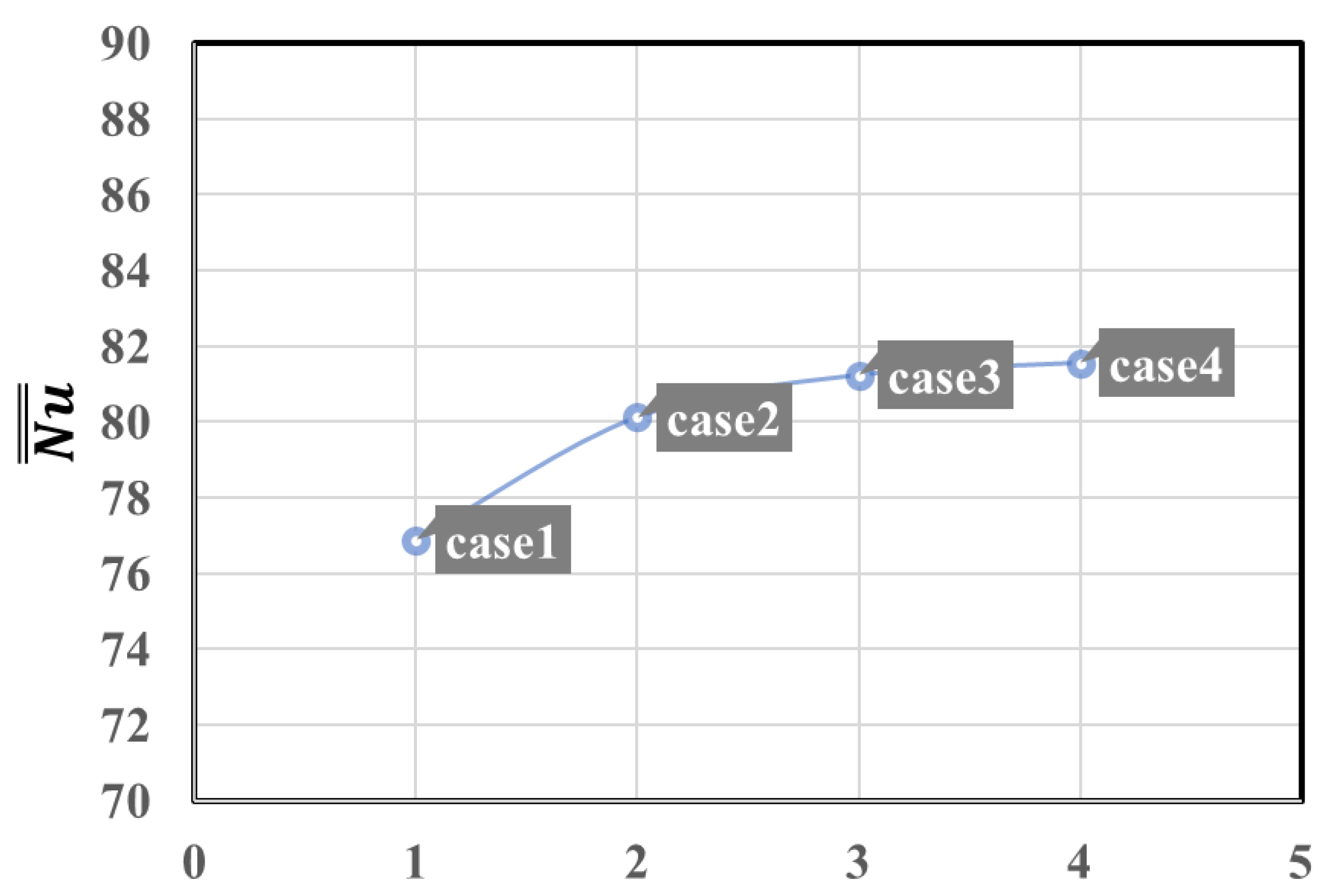
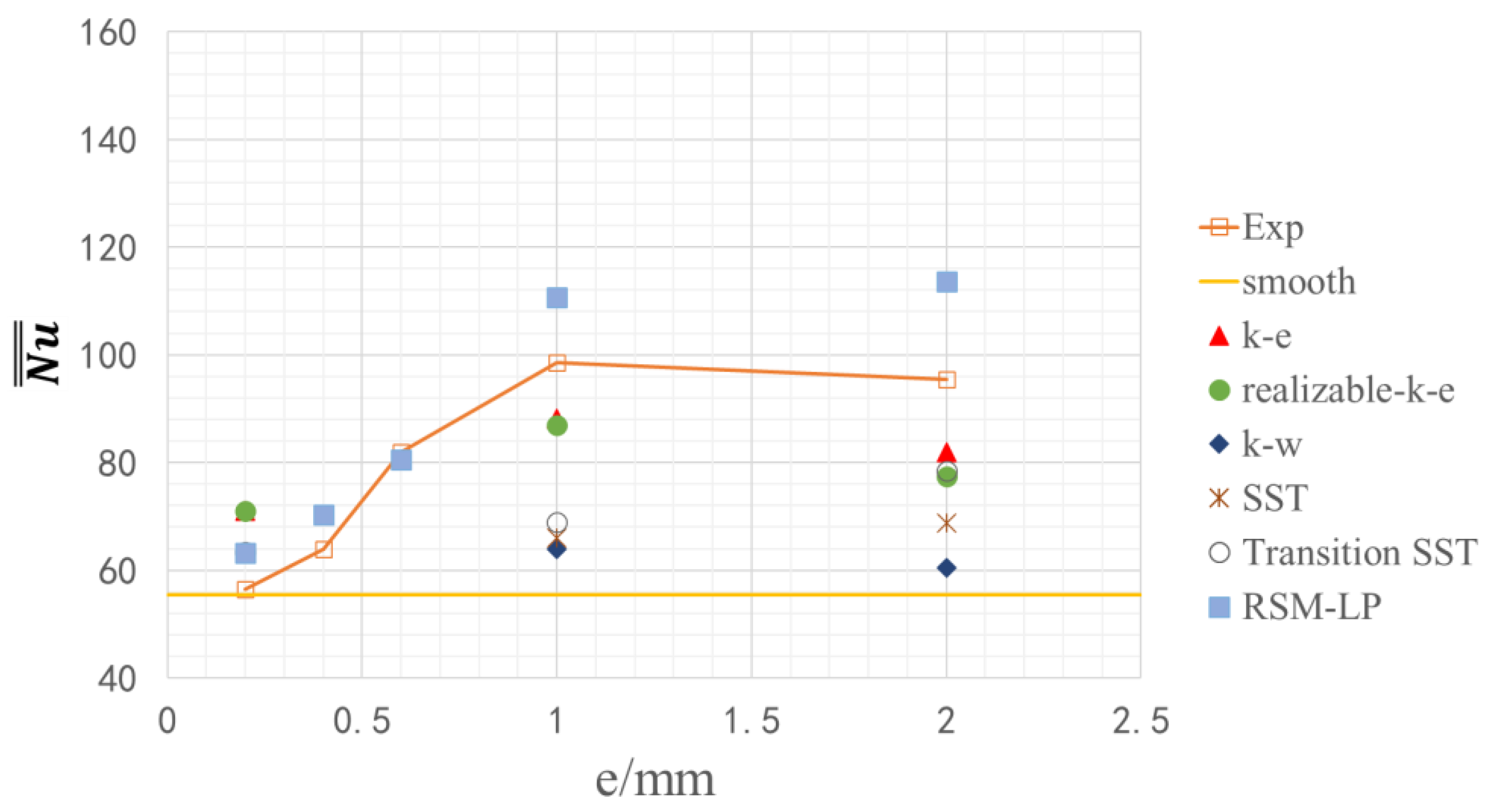
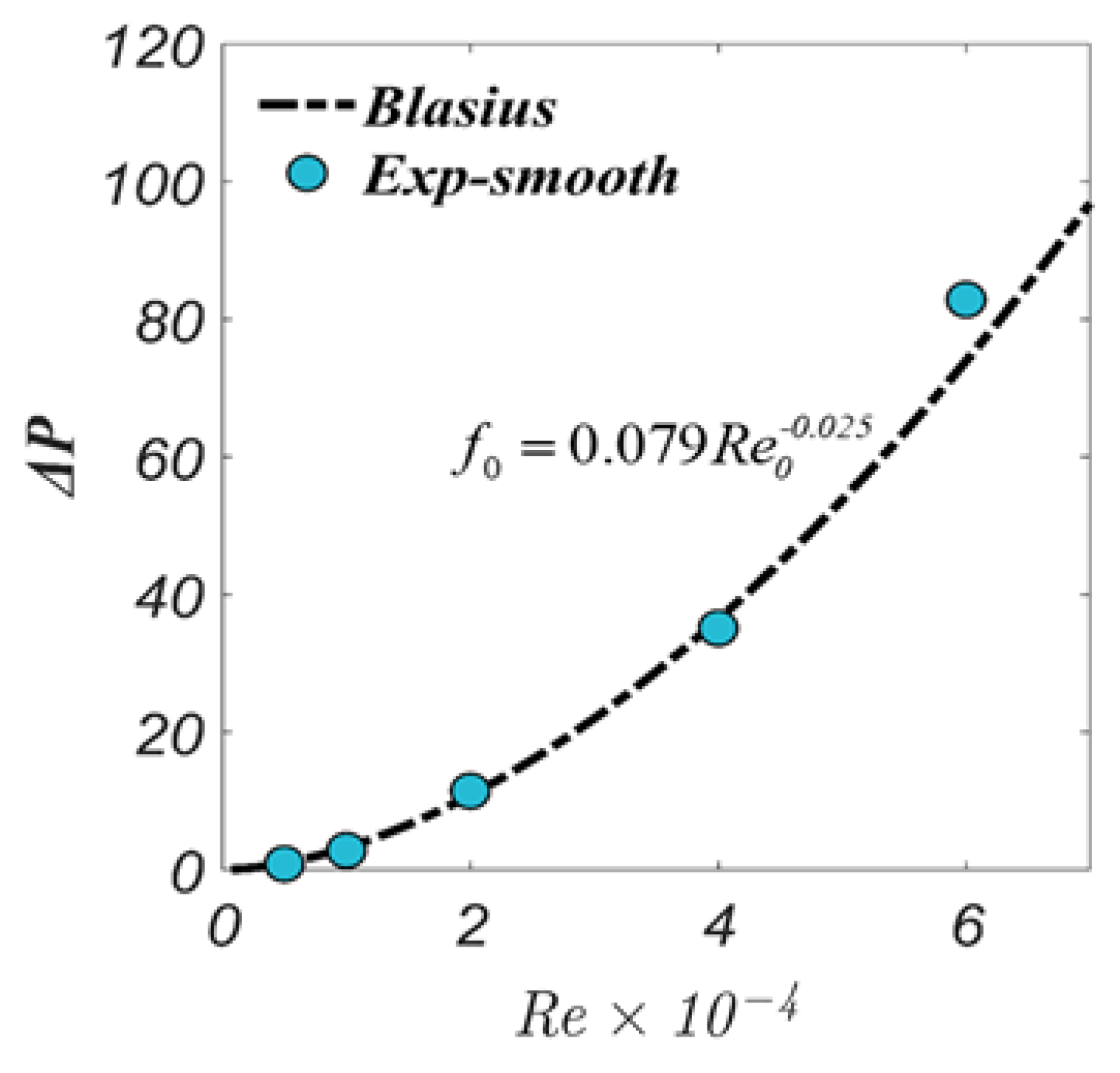

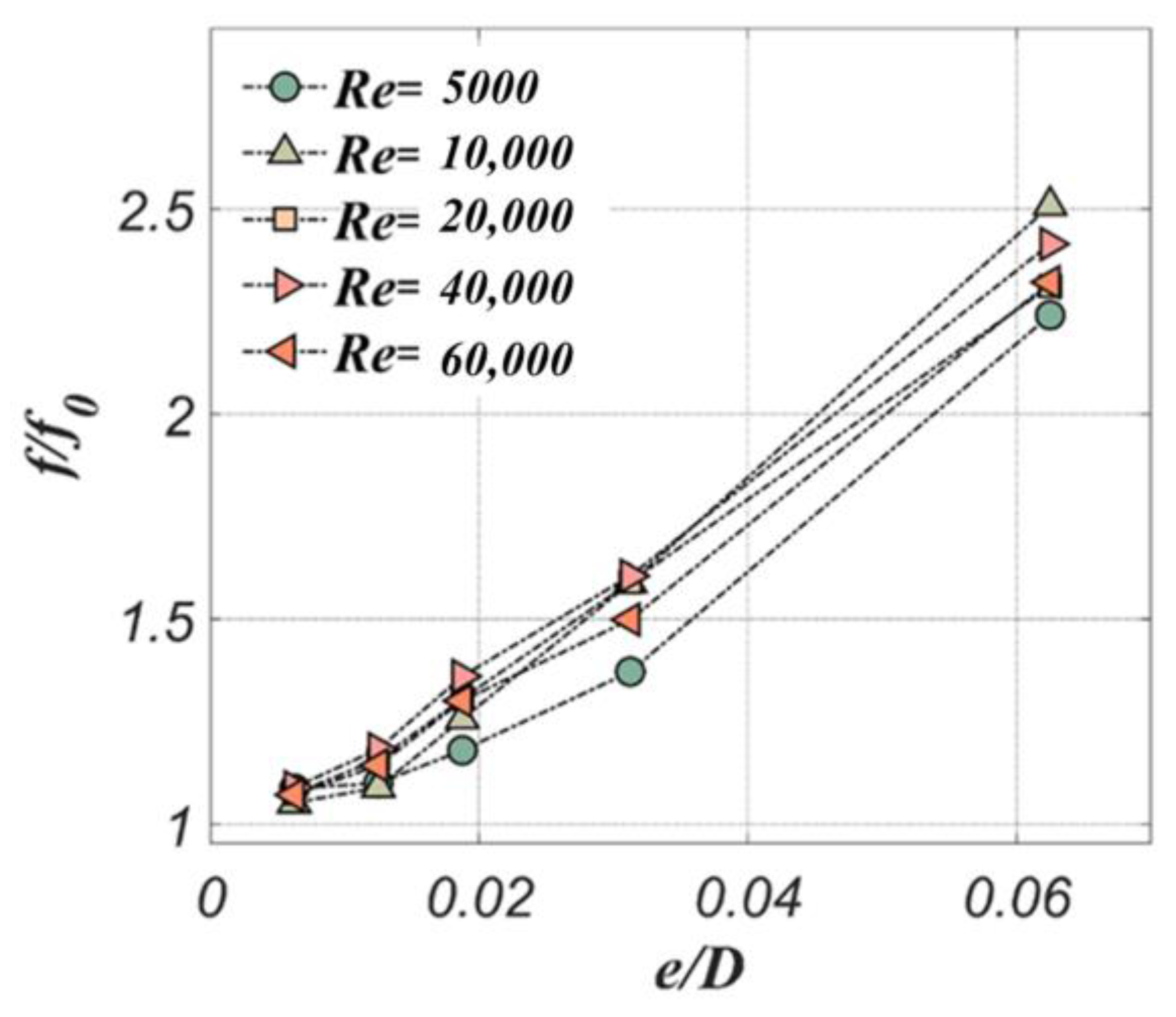
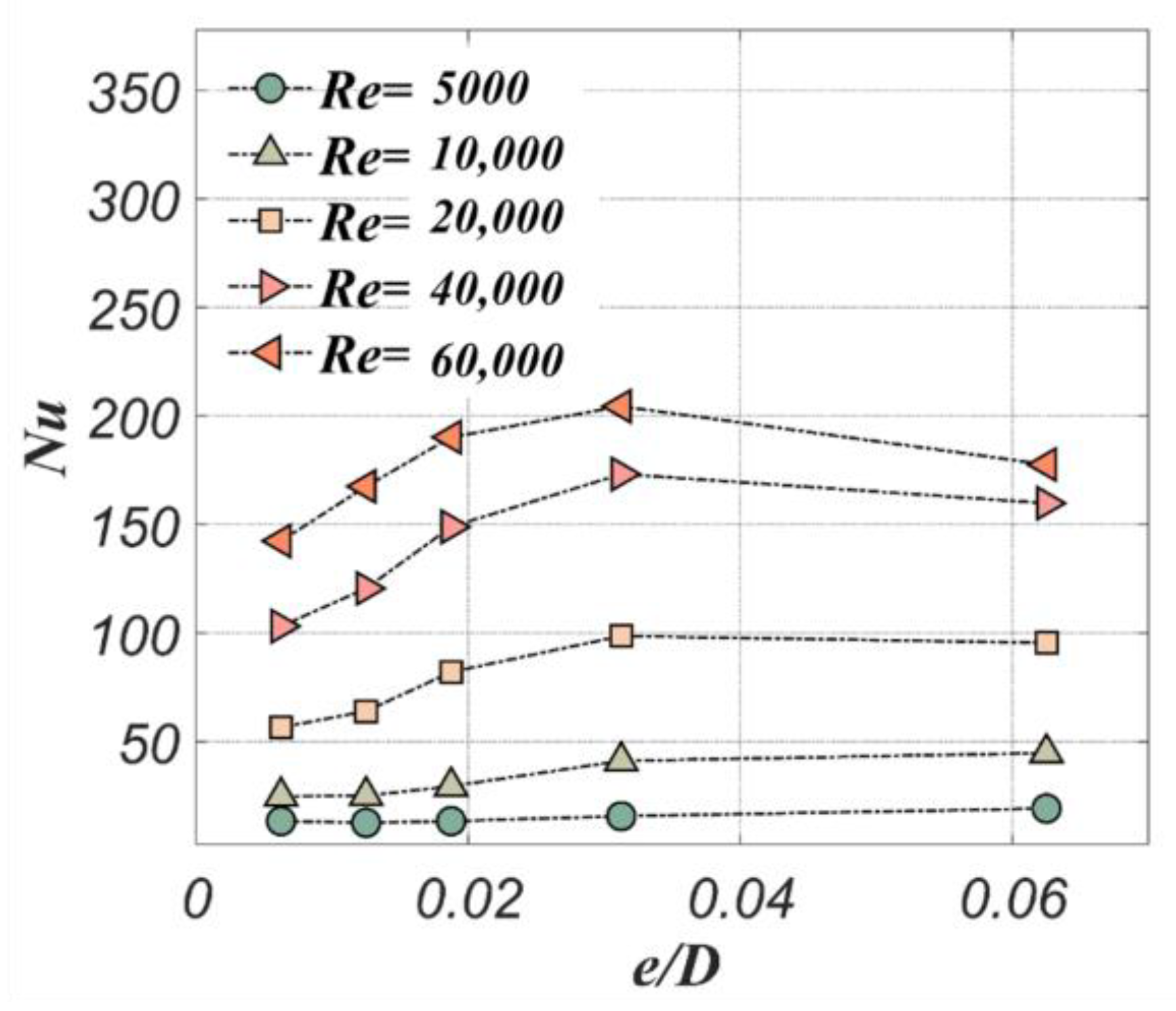


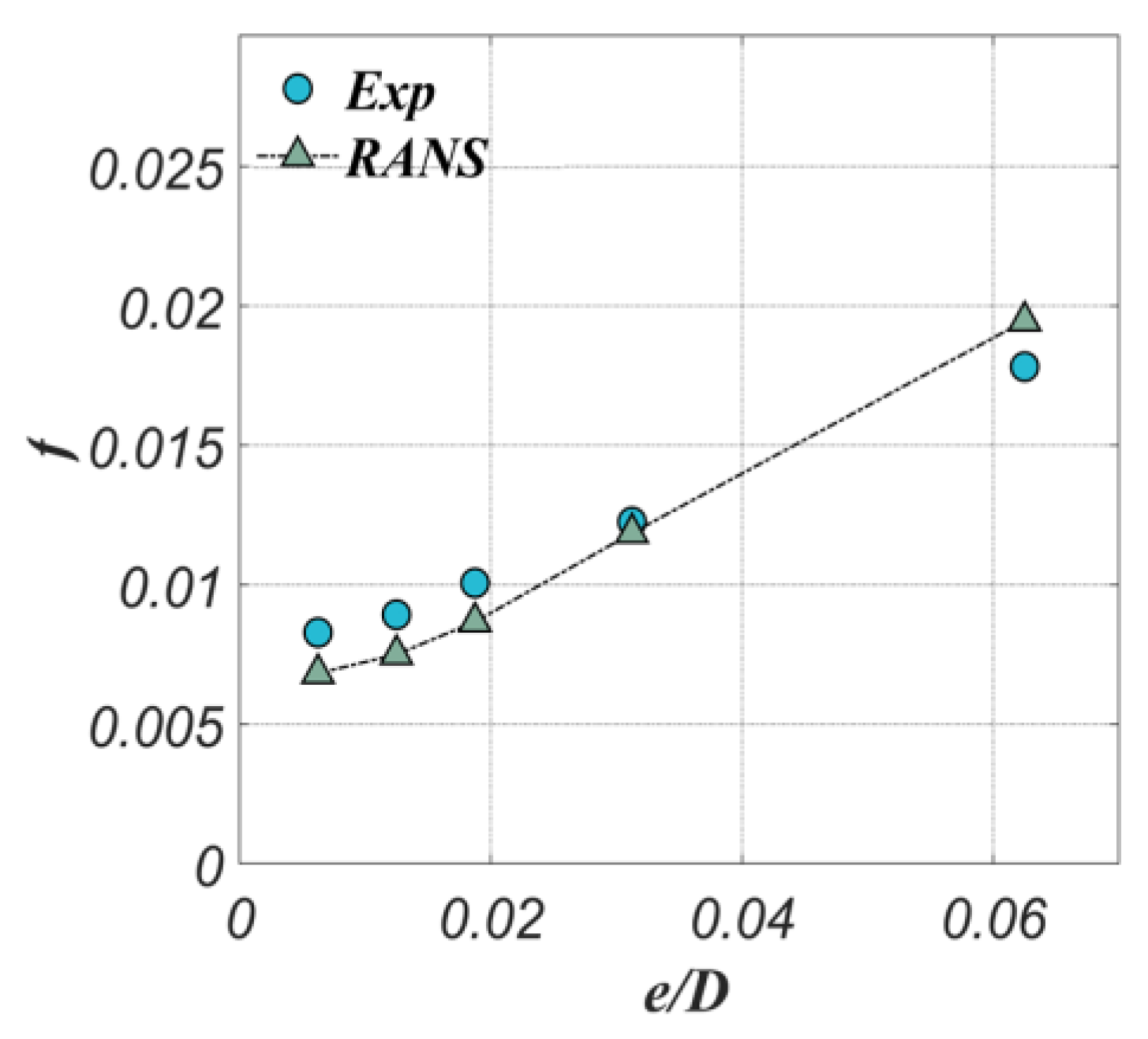

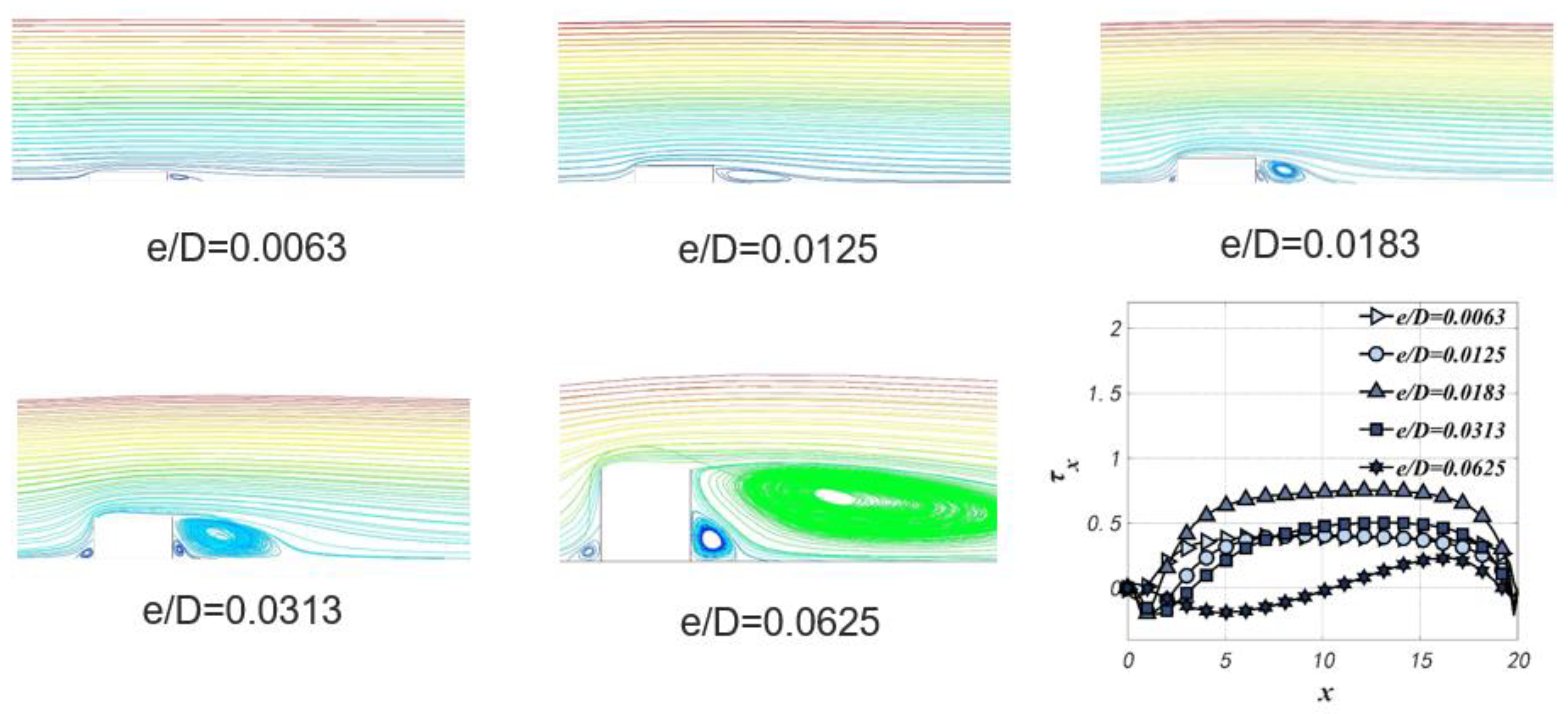
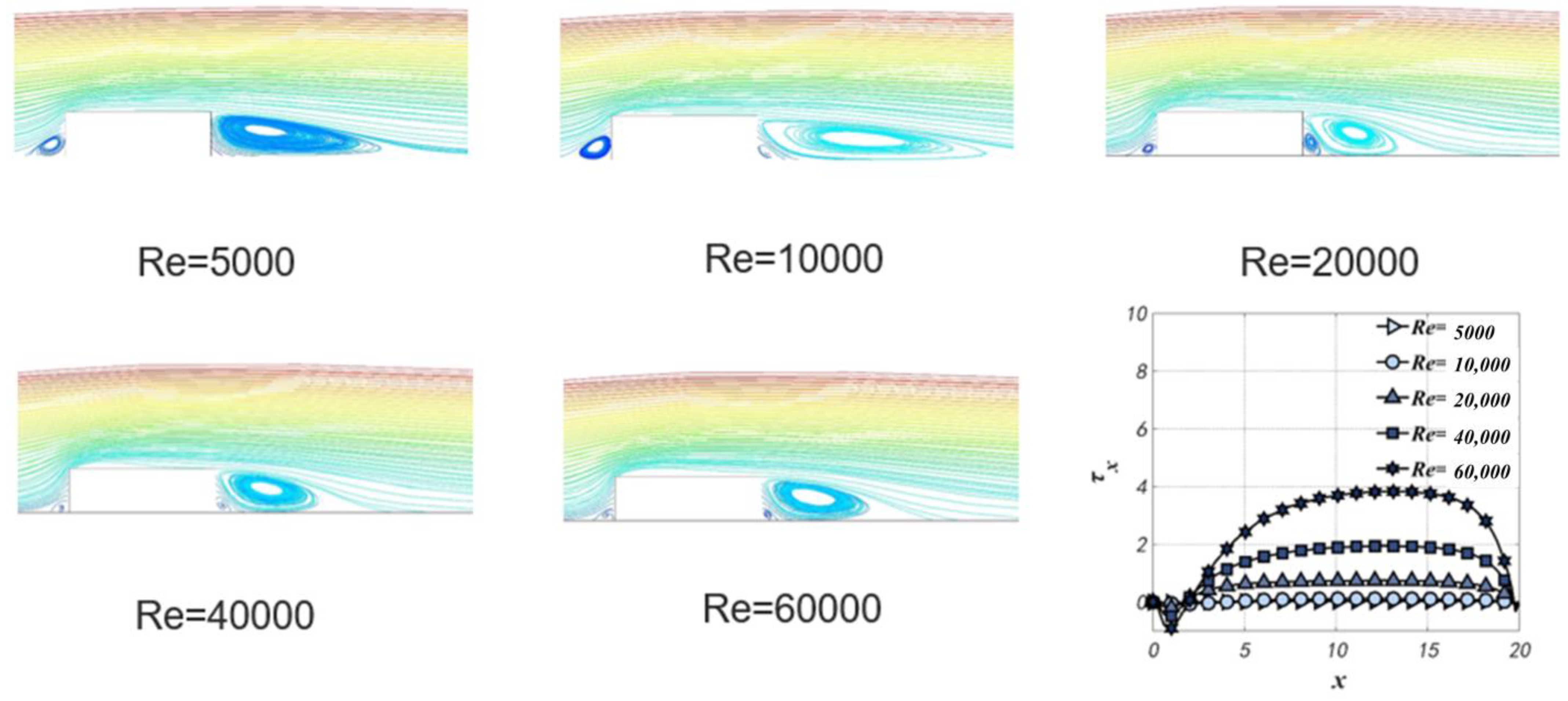
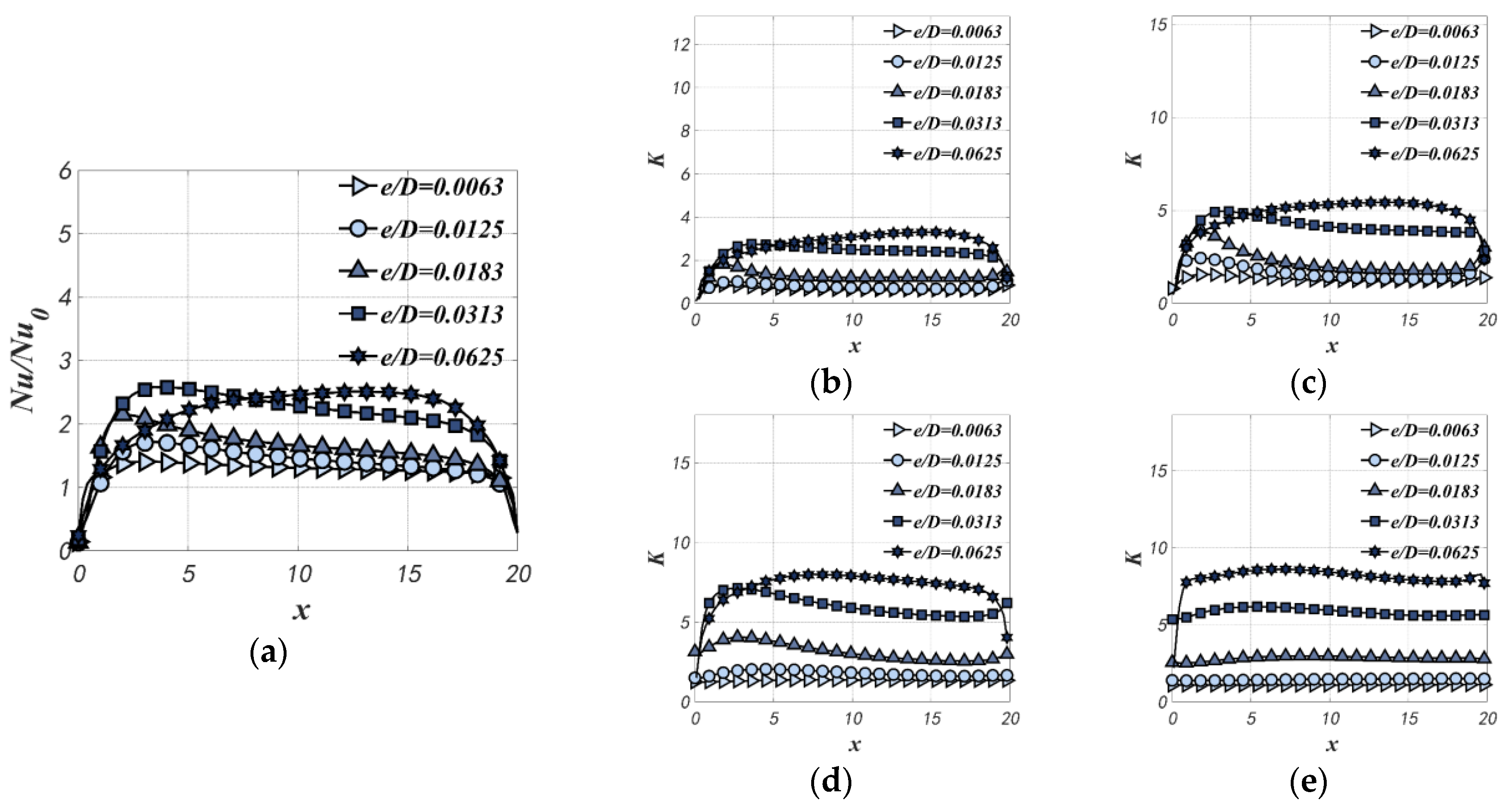
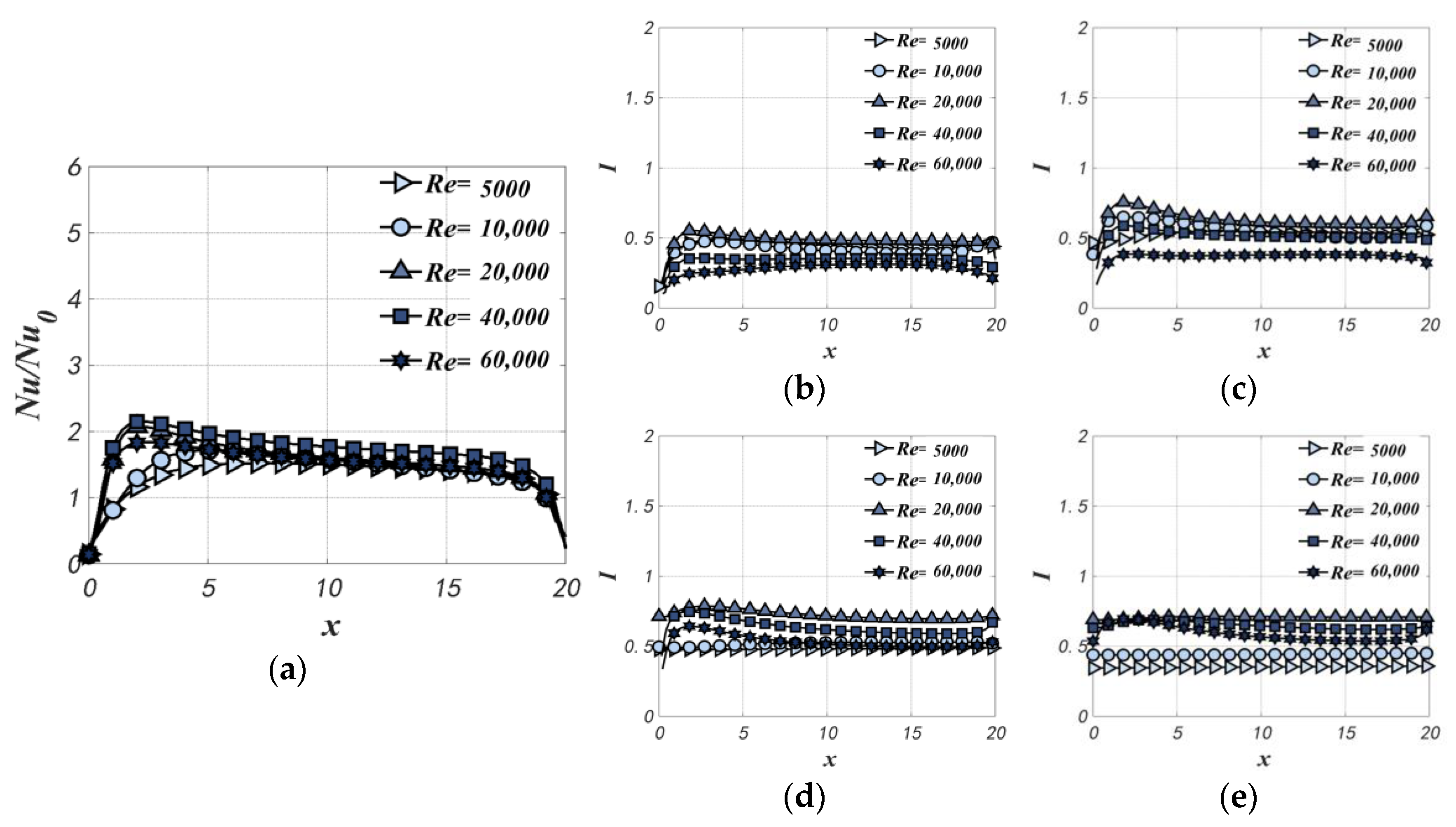
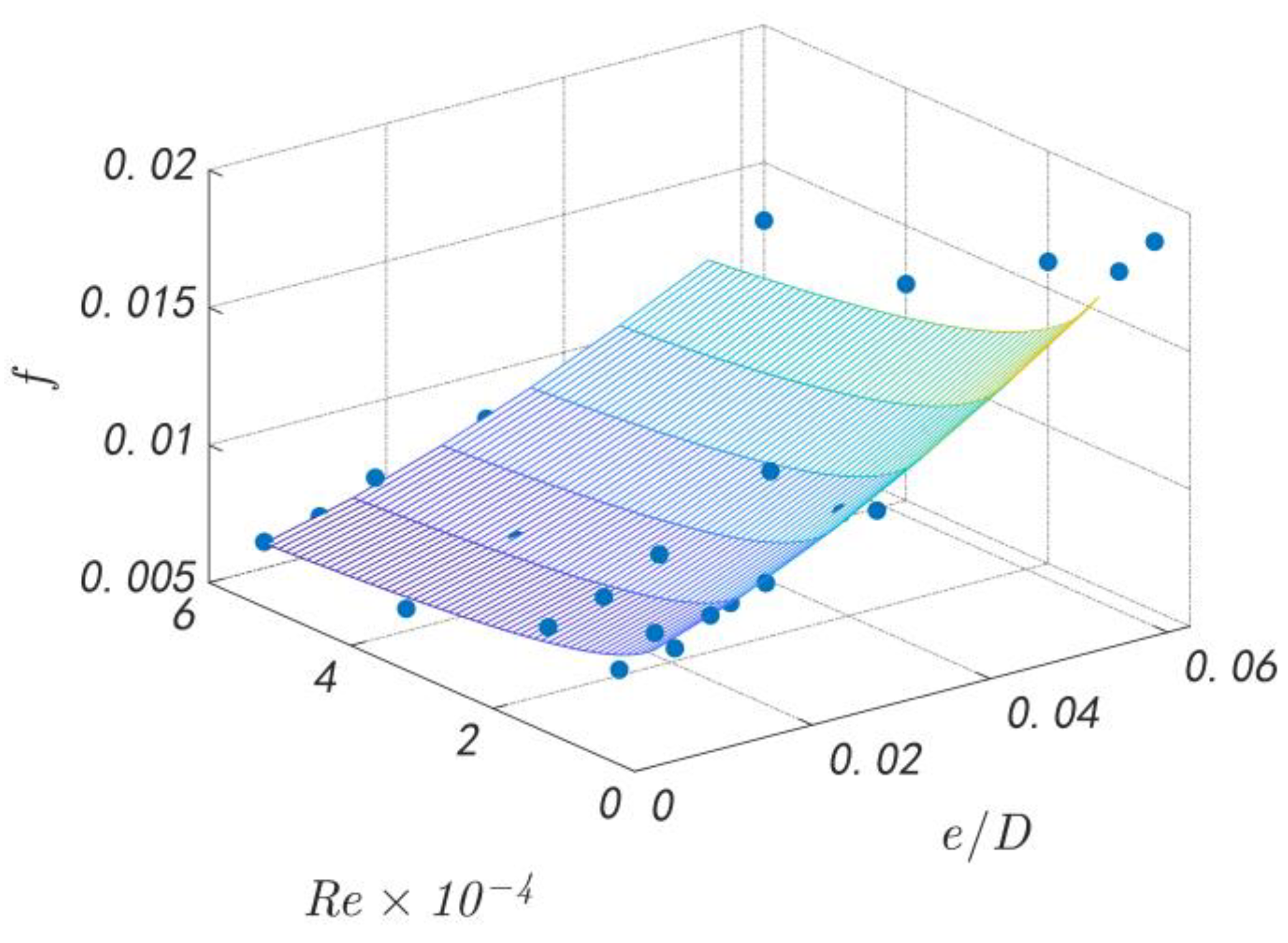
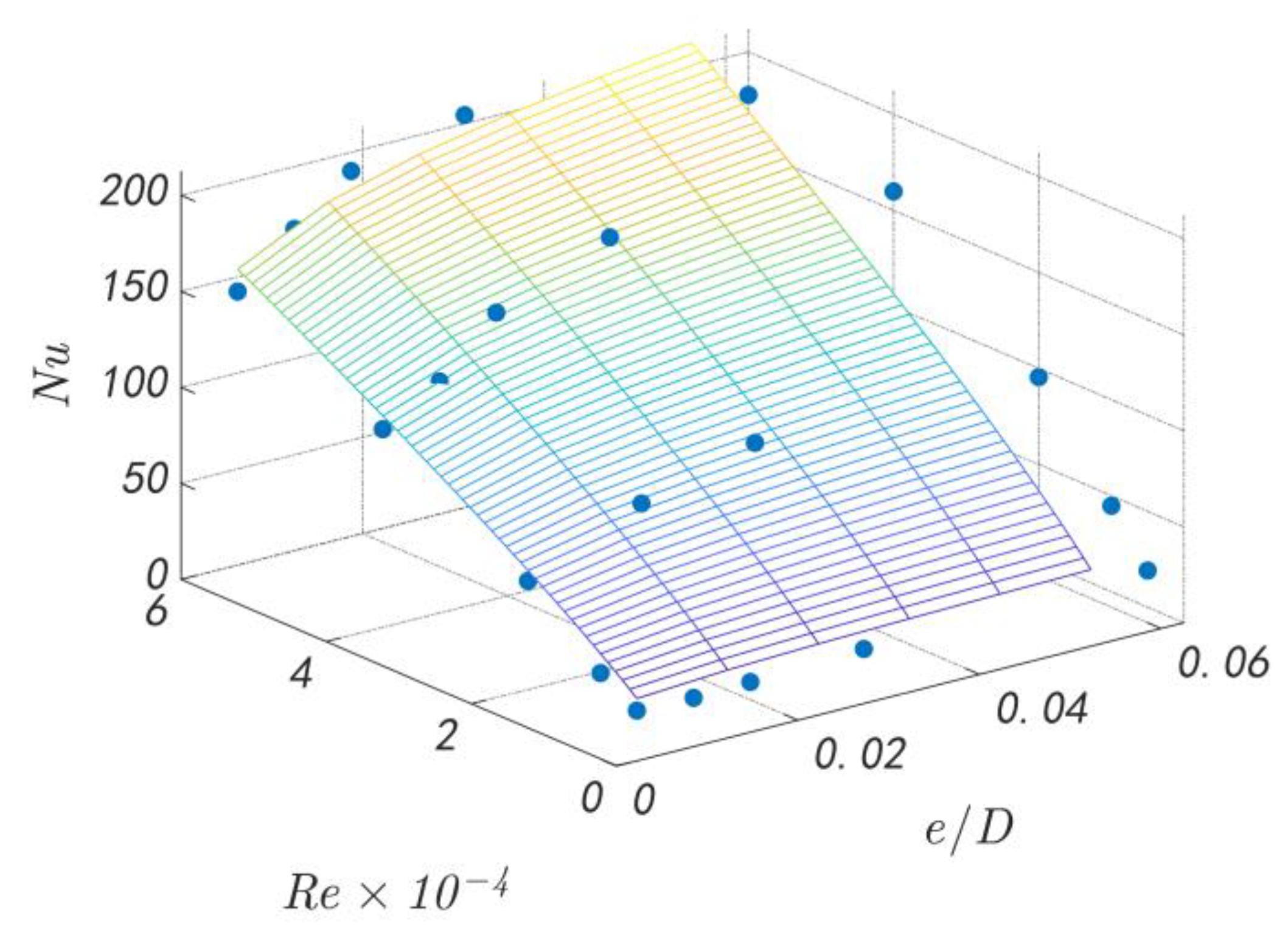
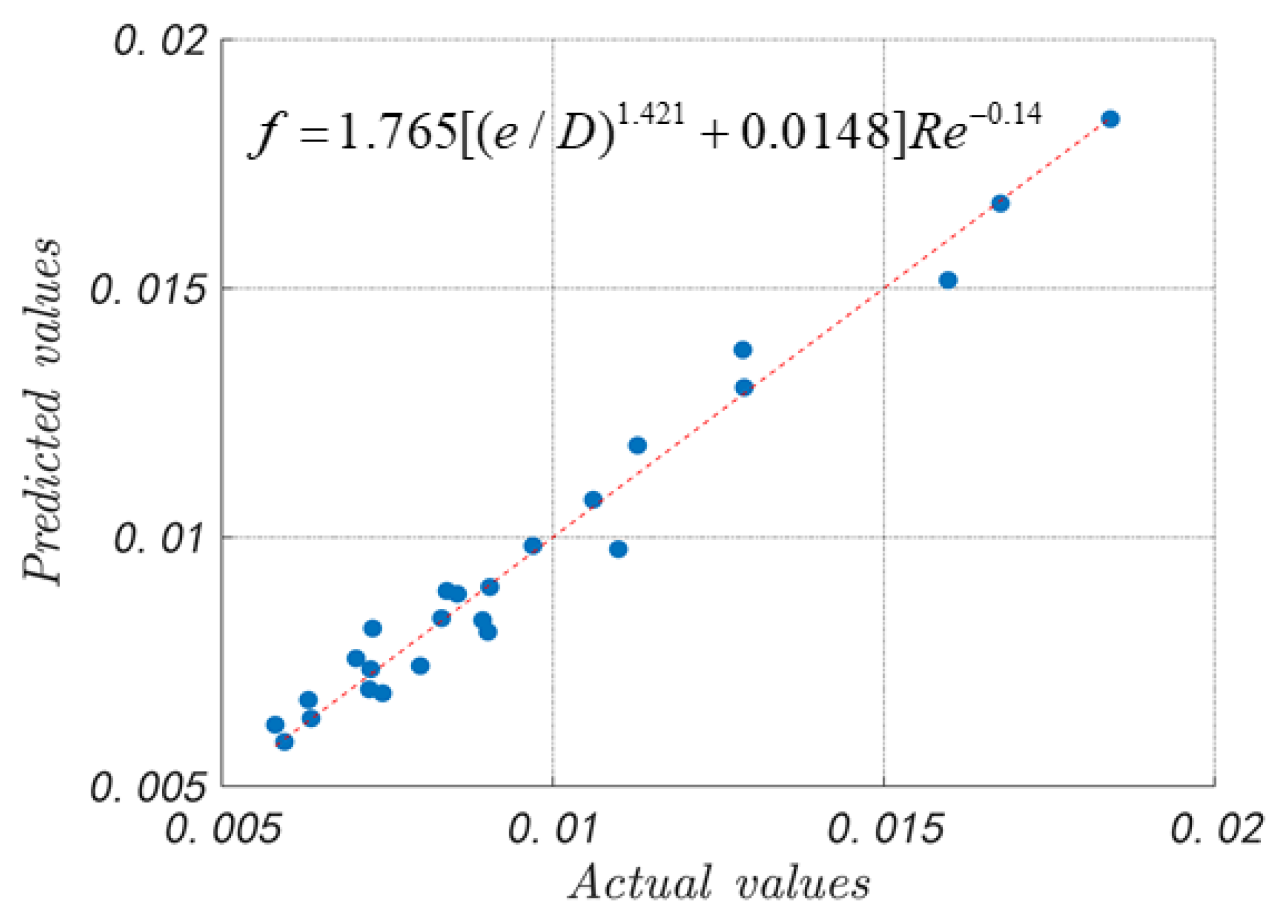

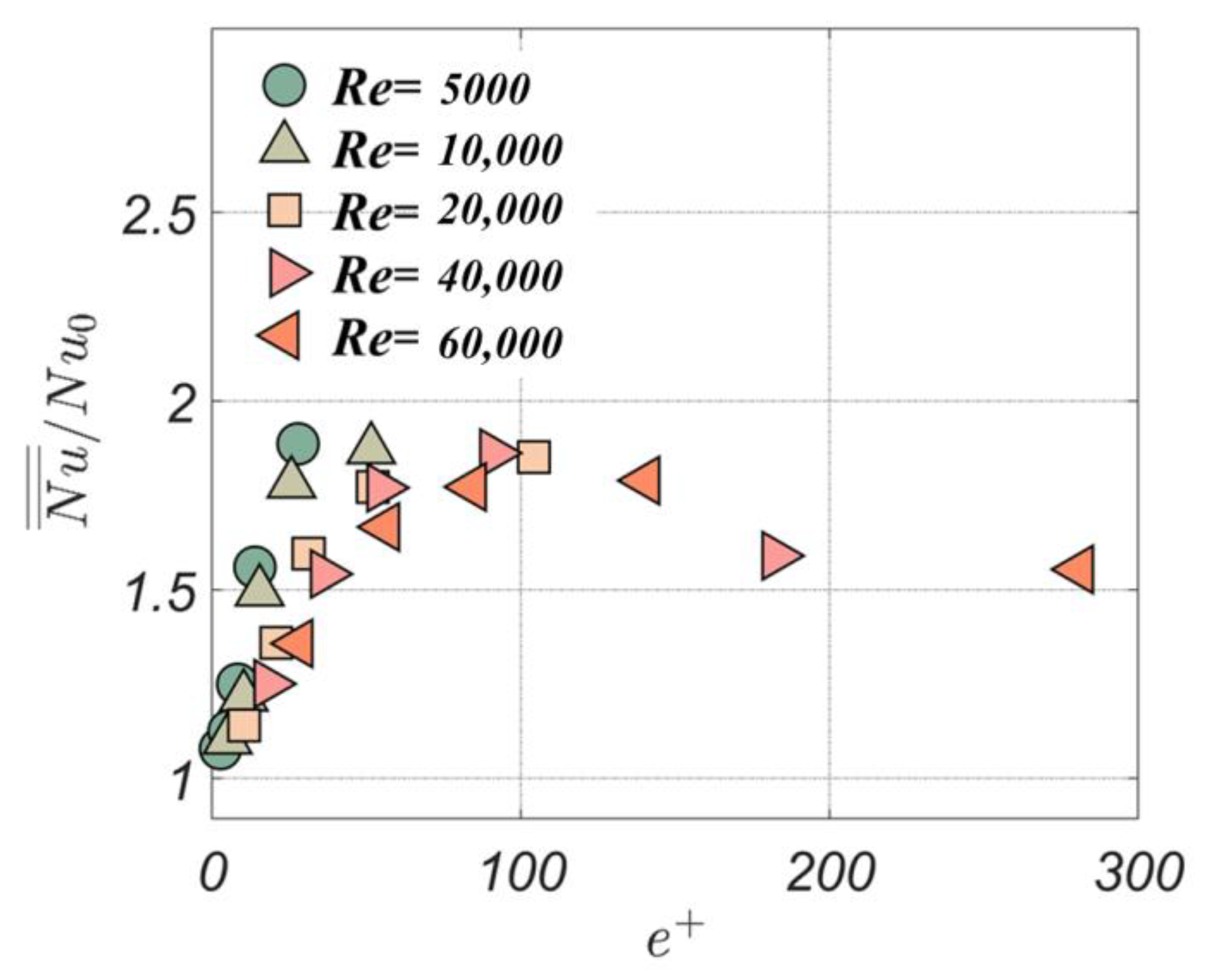
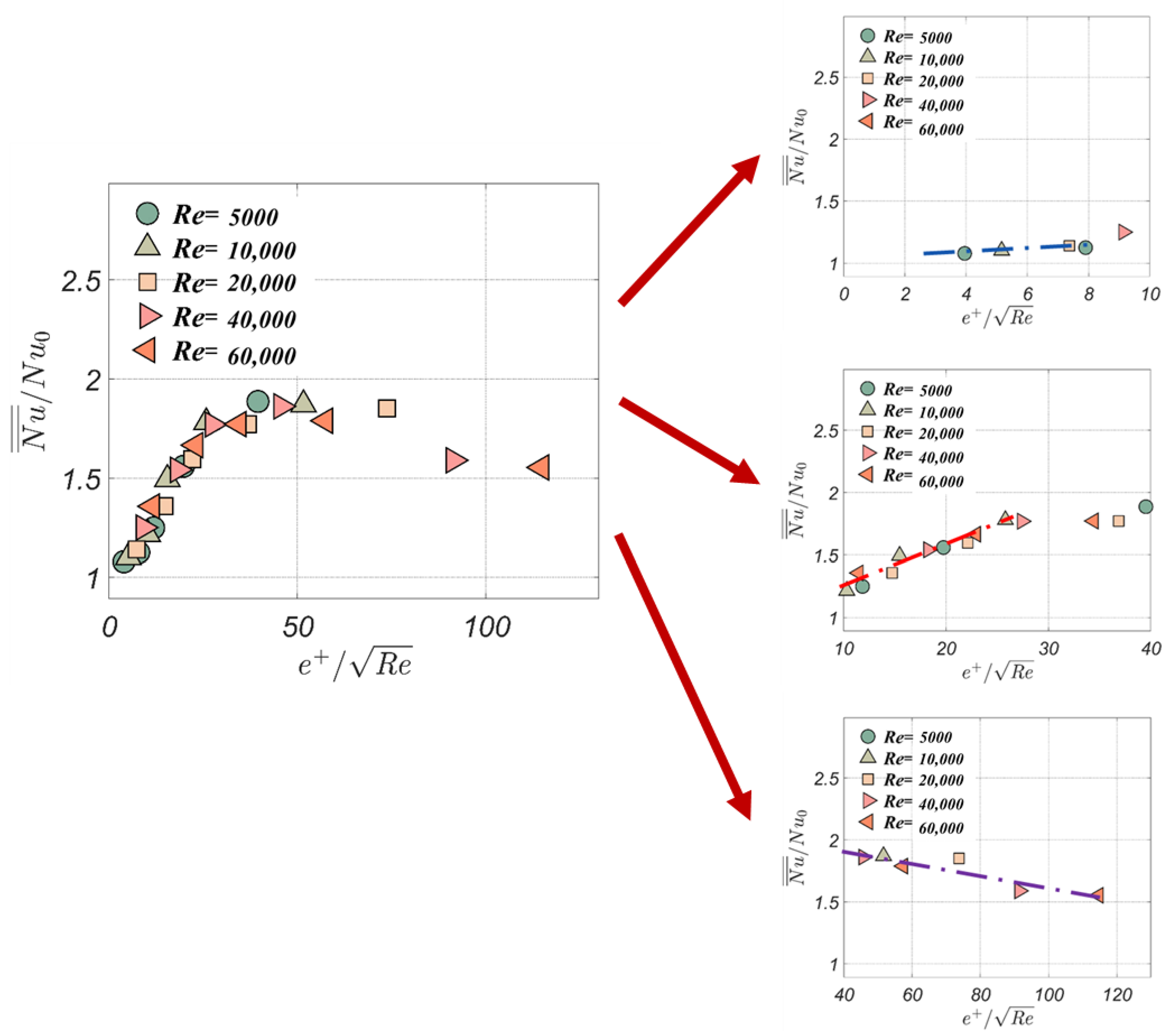

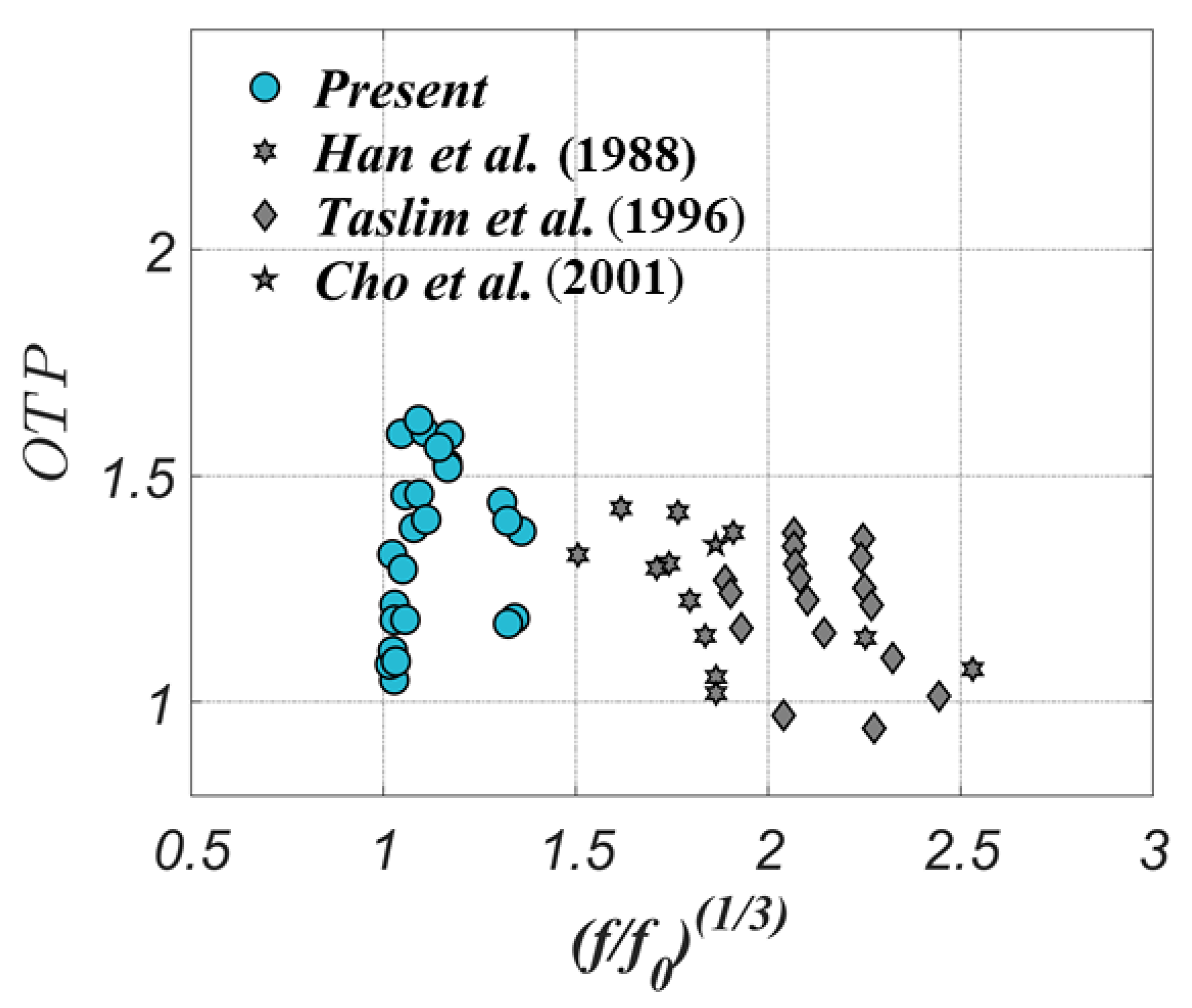
| Reference | Rib Configurations | AR | e/Dh | p/e | Re | α |
|---|---|---|---|---|---|---|
| Han [3] | Transverse rib | 1/4–4 | 0.047, 0.078 | 10, 20 | 10,000–60,000 | 90° |
| Tanda [4] | Transverse rib, Angled rib, V-ribs, Broken ribs | 5 | 0.15,0.25 | 8, 13.3 | 9000–35,500 | 45°–90° |
| Liou [5] | Transverse rib | 2 | 0.133 | 10 | 33,000 | 90° |
| Taslim [6] | Transverse, Angled, V-Shaped, Discrete Ribs | 2 | 0.083–0.167 | 10 | 5000–30,000 | 45°, 90° |
| Park [7] | Angled rib | 1/4–4 | 0.047, 0.078 | 10 | 10,000–60,000 | 30°–90° |
| SriHarsha [8] | Continuous ribs, V-broken ribs | 1 | 0.0625–0.25 | 10 | 10,000–30,000 | 60°, 90° |
| Cho [9] | Transverse, Angled ribs | 0.08 | 8 | 60°, 90° | ||
| Tanda [10] | Angled ribs | 5 | 0.09–0.15 | 6.6–20 | 8900–36,000 | 45° |
| Wright [11] | Angled ribs | 3 | 0.079 | 2.6–14.6 | 10,000–70,000 | 45° |
| Hossain [12] | Angled ribs | 0.0264 | 15 | 100,000–200,000 | 45°, 90° | |
| Dees [13] | Transverse ribs, | 10,000–40,000 | 90° | |||
| Coletti [14] | Angled ribs, | 7.5 | 67,500 | 30° | ||
| Liou [15] | Transverse rib | 1.41 | 0.1 | 10 | 10,000 | 90° |
| Kaewchoothong [16] | Transverse rib, Angled rib, V-ribs, Broken ribs | 2.5 | 0.18 | 10 | 400–1200 | 30°–90° |
| Present work | Transverse ribs | 4 | 0.0063–0.063 | 10–100 | 5000–60,000 | 90° |
| L (mm) | 1000 |
| Ls (mm) | 700 |
| W (mm) | 80 |
| H (mm) | 20 |
| e (mm) | 0.2, 0.4, 0.6, 1, 2 |
| p (mm) | 10 |
| D (mm) | 32 |
| e/D | 0.0063, 0.0125, 0.0188, 0.0313, 0.0625 |
| W/H | 4 |
| Rein | 5000, 10,000, 20,000, 40,000, 60,000 |
| e+ | 0.2 mm | 0.4 mm | 0.6 mm | 1 mm | 2 mm |
|---|---|---|---|---|---|
| 5000 | 2.794 | 5.588 | 8.382 | 13.97 | 27.94 |
| 10,000 | 5.16 | 10.32 | 15.48 | 25.8 | 51.6 |
| 20,000 | 10.43 | 20.86 | 31.29 | 52.15 | 104.3 |
| 40,000 | 18.282 | 36.564 | 54.846 | 91.41 | 182.82 |
| 60,000 | 28.09 | 56.18 | 84.27 | 140.45 | 280.9 |
| Quantity | Values | Error | ecr (%) | Copper Bar Number | Uncertainty |
|---|---|---|---|---|---|
| h (W/(m2·K)) | 103.34 | - | - | 1 | 5.60% |
| U (V) | 11.13 | 0.144 | 2.58 | 2 | 6.31% |
| R (Ω) | 28.8 | 0.1 | 0.35 | 3 | 6.14% |
| qloss (W/m2) | 83.7 | 7.17 | 0.27 | 4 | 7.12% |
| Tw (°C) | 50 | 0.5 | 2.0 | 5 | 6.74% |
| Tf (°C) | 25.1 | 0.1 | 0.4 | 6 | 7.08% |
| Uncertainty (%) | - | - | 5.60 | 7 | 6.76% |
| 8 | 7.13% |
| NUMERICAL SETTINGS | |
| TURBULENCE MODEL | Reynolds stress model with enhanced wall treatment, linear pressure |
| MESH SETUP | Structure mesh, near-wall Δy+ = 1 Grid number is about 3.9 million |
| BOUNDARY CONDITION | |
| INLET | Mass flow inlet, T = 320 K |
| OUTLET | Pressure outlet, gauge pressure = 0 |
| SIDE SURFACE | Periodical boundary condition |
| SURFACE BETWEEN THE RIBS | No slip stationary wall, temperature thermal condition T = 300 K |
| RIB SURFACE AND OTHER SURFACE | Adiabatic condition |
| Difference | e/D = 0.0063 | e/D = 0.0125 | e/D = 0.0183 | e/D = 0.0313 | e/D = 0.063 |
|---|---|---|---|---|---|
| f | 17% | 16% | 16% | 7% | 1% |
| Nu | 12% | 10% | 2% | 12% | 19% |
Disclaimer/Publisher’s Note: The statements, opinions and data contained in all publications are solely those of the individual author(s) and contributor(s) and not of MDPI and/or the editor(s). MDPI and/or the editor(s) disclaim responsibility for any injury to people or property resulting from any ideas, methods, instructions or products referred to in the content. |
© 2023 by the authors. Licensee MDPI, Basel, Switzerland. This article is an open access article distributed under the terms and conditions of the Creative Commons Attribution (CC BY) license (https://creativecommons.org/licenses/by/4.0/).
Share and Cite
Zhao, K.; Li, X.; Ren, J. Aerothermal Dynamic Characteristics of Array Micro Ribs in Channel Flow. Energies 2023, 16, 5986. https://doi.org/10.3390/en16165986
Zhao K, Li X, Ren J. Aerothermal Dynamic Characteristics of Array Micro Ribs in Channel Flow. Energies. 2023; 16(16):5986. https://doi.org/10.3390/en16165986
Chicago/Turabian StyleZhao, Ke, Xueying Li, and Jing Ren. 2023. "Aerothermal Dynamic Characteristics of Array Micro Ribs in Channel Flow" Energies 16, no. 16: 5986. https://doi.org/10.3390/en16165986
APA StyleZhao, K., Li, X., & Ren, J. (2023). Aerothermal Dynamic Characteristics of Array Micro Ribs in Channel Flow. Energies, 16(16), 5986. https://doi.org/10.3390/en16165986






